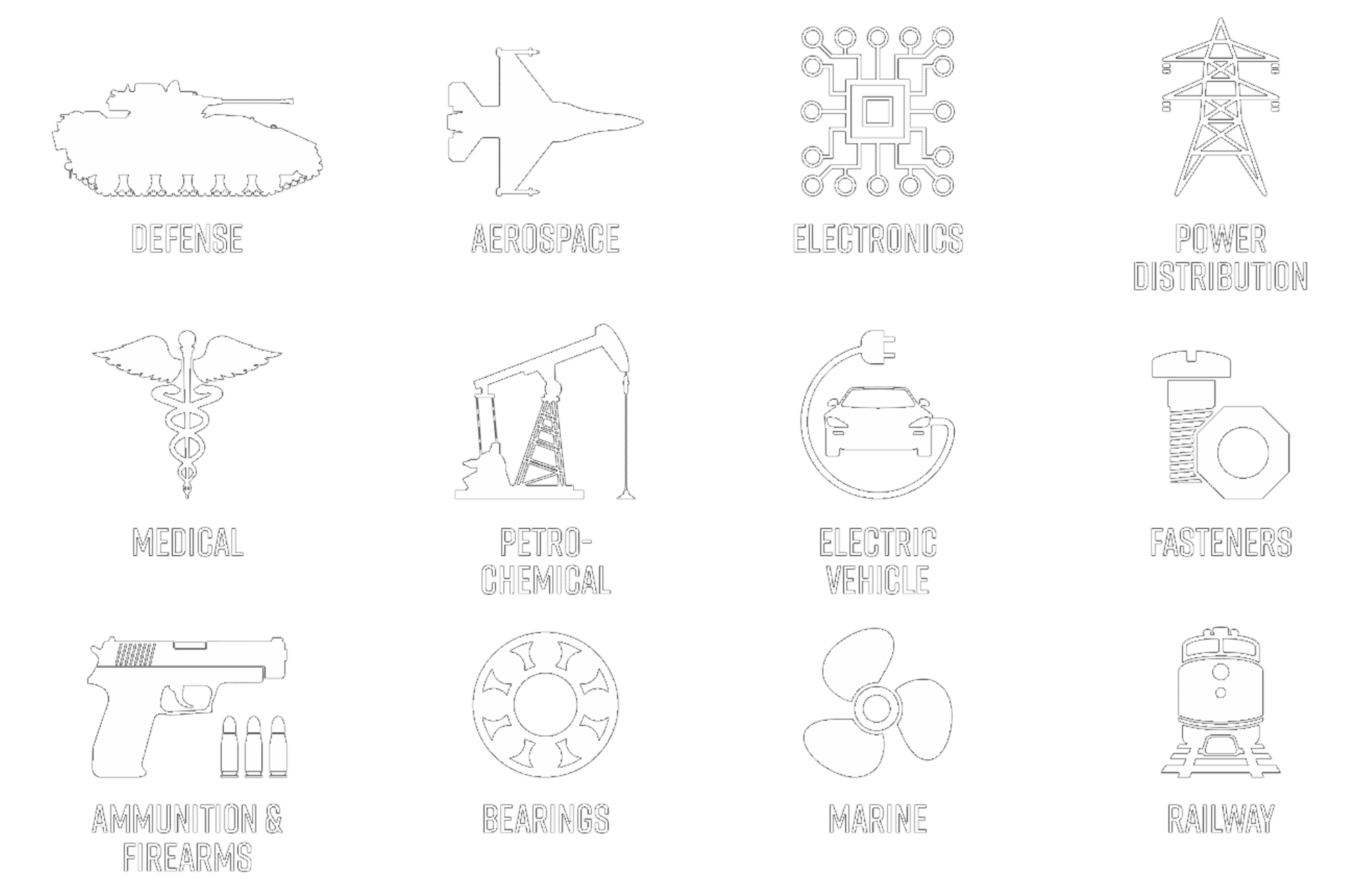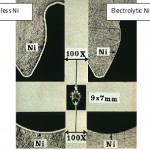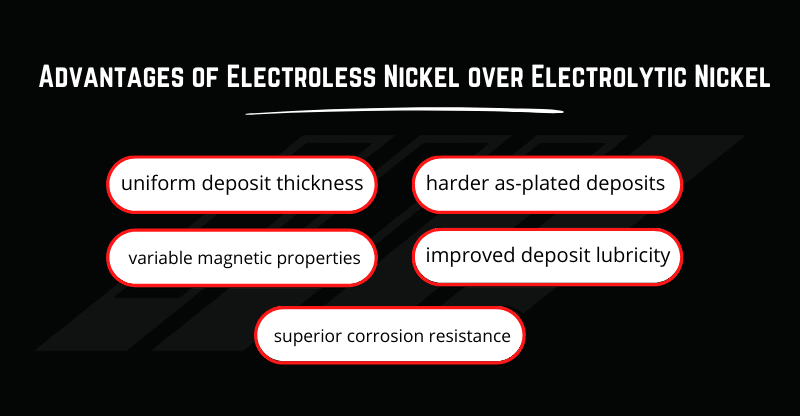The electroless nickel plating process (EN) has several distinct advantages over the traditional electrolytic nickel plating process. The primary difference with the nickel plating process is that EN does not require the application of an external electrical current to drive the deposition as does electrolytic nickel. Rather, EN uses a chemical reducing agent within the solution chemistry which results in nearly uniform deposition on all surfaces that are wetted by the EN chemistry. Since the electrolytic nickel plating process requires the application of an externally applied DC current, the deposit tends to be non-uniform with excess deposit on the edges or corners (high current areas) of the part.
An additional difference is that EN is an amorphous alloy of nickel and phosphorous. The addition of phosphorous provides the deposit with more corrosion resistance, less magnetic properties (high phosphorous varieties) and a lower coefficient of friction than electrolytic nickel. The application of post-plate heat treatment of EN causes the formation of nickel phosphides at grain boundaries which further hardens the deposit to as high as 69 Rc. The plate is uniform across diameters, across threads and in dead end holes. This property often eliminates the need for post-plate machining on critical dimensions.
Figure 1 shows two cross-sectional photos of two identical gears, one plated in electroless nickel and one plated in electrolytic nickel. The drastic improvement in uniformity of the deposit is very clearly seen. The top photos show the teeth of the gears, the bottom photos show the inner bore of the gear. Note that EN plates completely within the bore. You will note that the electroless nickel as creates deposits of highly consistent uniform thickness across all surfaces, including edges and complex interior geometries.
In summary, the advantages of electroless nickel over electrolytic nickel are as follows:
1. uniform deposit thickness (typical standard deviations are +/- 0.00001″)
2. superior corrosion resistance – especially in high phosphorus varieties
3. variable magnetic properties
4. harder as-plated deposits that can be further hardened with heat treatment to approximately 90% of hard chromium
5. improved deposit lubricity
In addition to standard electroless nickel, Advanced Plating Technologies offers a proprietary black electroless nickel plating process called Tacti-Black® Electroless Nickel. This process offers the same performance benefits of electroless nickel with a fully conductive black appearance.
Have an application you are looking to get electroless nickel plated?











